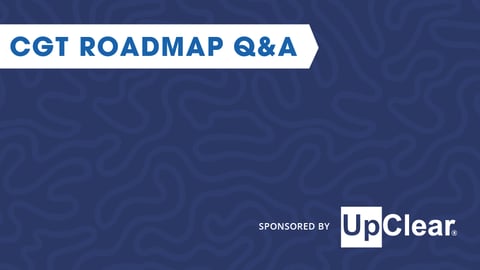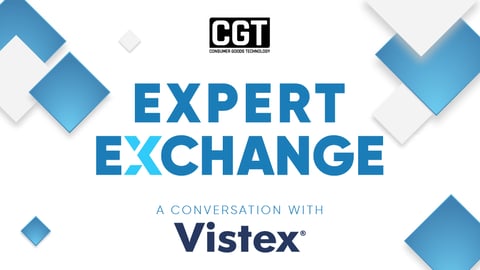RGM 2.0: CPG Leaders Turn to Revenue Growth Management to Help Fight Inflation
There’s never an off-season for CPG leaders, mainly because the industry’s inherent volatility gives companies an edge. But inflation has been a particularly persnickety nuisance of late, resulting in dramatic price fluctuations, channel disruptions, and other shifts in e-commerce/DTC sales that have shrunk already narrow price margins even further.
Those looking for a simple answer will be disappointed because these are foundational issues that can’t be solved by a single innovation. Instead, CPG leaders are going back to basics, revolutionizing their approach to revenue growth management (RGM).
"You don’t fix a flat tire by adding more bells and whistles."
Data-Driven, Sustainable Growth
As an idea, RGM has been around since the 1970s, when Ken Littlewood first developed an algorithm for the airline industry that proposed using discounted fares if their value exceeded anticipated revenue from full-fare tickets. The concept improved as it evolved through other industries, but its stubborn focus on pricing as a standalone variable incentivized the use of cheap materials and helped proliferate offerings like Temu flooding the market.
When inflation starts ticking up (as it has been the past few years), those using a traditional RGM model would just pass along any operational costs to the customer, offering them two choices — pay more for the same items or less for inferior ones. Now, thanks to an explosion of innovation that allows CPG leaders to analyze huge amounts of customer information, companies are scrambling to gather more data to provide better visibility into their operations and unlock new value.
Approaches have varied. Some, like the 150-year-old Kimberly-Clark, have turned inward, collecting and organizing their in-market data into self-service data lakes that are easier to access for strategic use. Others, like Crocs, have taken an acquisition path, snapping up their competitor HeyDude for $2.5 billion to boost growth, onboard their customer data, and increase personalization options.
A New Revenue Growth Management Reality: RGM 2.0
Despite differing tactics, the way forward seems clear. By taking an integrated approach to revenue that includes a range of data-driven strategies around assortment, promotions, trade management, and pricing, CPGs can find more creative ways to enhance efficiency and drive customer engagement, without relying on price increases alone.
And when paired with powerful artificial intelligence/machine learning capabilities, organizations can process even larger volumes of data across diverse sources and discover unique patterns to drive and optimize future revenue growth initiatives.
Here are three other advantages for CPG companies who are looking to create (or optimize) an efficient RGM strategy:
1. Increased Supply Chain Efficiency
The rising costs of raw materials and production make it impossible to provide the same quality of product for the same price over time, a reality that has been a source of frustration for both CPG companies and consumers since the dawn of sales. RGM helps rethink the whole process by using advanced analytics to optimize supply and demand. By using a just-in-time (JIT) inventory system for instance, CPG companies can streamline logistics and produce/receive goods as close as possible to when they’re actually needed, thereby reducing waste and lowering costs.
A good example of an effective RGM supply chain transformation comes from PepsiCo, which understood the need to revamp its inventory management during the pandemic. PepsiCo products are found all over the world, so it wasn’t as simple as just tweaking prices here and there. Instead, they embarked on a holistic plan to upend their entire supply chain under the umbrella of sustainability, bringing together data from disparate product lines into one cohesive picture where they could deploy predictive analytics to improve demand forecasting.
By using its supply chain as a starting point and then connecting all the various dots that influence its efficiency, PepsiCo created a fully digital supply chain with real-time visibility aimed at enhancing efficiency and reducing costs.
2. Better Insights into Consumer Trends
Advanced analytics and AI help CPG companies by providing deep insights into market trends, consumer behavior, and operational performance. While the insights alone are valuable, the real source of their power lies in their integration at scale.
For example, Coca-Cola leverages AI and machine learning to analyze consumer data, but it also makes sure to spread the wealth of those insights across different functions, from the supply chain to social media teams. An effective RGM brings departments together and increases knowledge sharing.
3. Improved Strategic Partnerships
Strategic partnerships allow CPGs to expand their market reach, optimize distribution channels, and co-create value with key stakeholders. These relationships are critical for sustained growth but get more difficult to manage as a company scales. That’s where a solid RGM system helps organize and optimize alliances with major retailers and distributors, allowing CPGs to better manage their data, leverage their market presence, and maintain oversight of their distribution networks.
Back in 2016, when Mondelez International wanted to start selling to Chinese consumers, the CPG company knew it needed a strong partner in the region. Rather than investing time and money into creating their own network, they inked a deal with Alibaba’s Tmall to give them the necessary e-commerce platform, resulting in significant sales growth in the region. This sort of integration would only be possible with a solid RGM system in place to help manage all the moving parts.
RGM 2.0: A New Blueprint for a New Future
The pace of innovation will never be slower than it is right now, and CPG companies have a unique opportunity to recalibrate their RGM strategies to handle the stressors of this new normal and create revenue models to support sustainable growth in the future. RGM 2.0 is soon to become the reality for most CPG companies. To keep pace with innovation, start now.
Krishnan Venkata is the chief client officer of LatentView Analytics.








